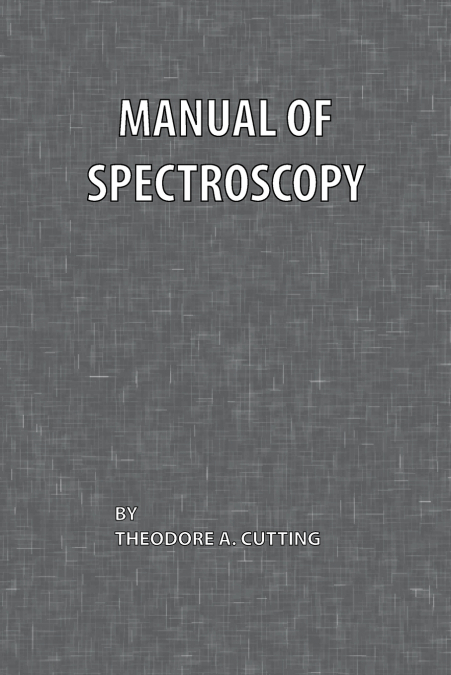
Theodore A. Cutting / Theodore ACutting
CONTENTS - Preface - I. History and Theory of Spectroscopy - 1. Historical Review - 2. The Atom in Spectroscopy - II. Light Sources - 1. The Electric Arc - 2. The Spark - III. Spectroscopes - 1. Optical Systems - 2. Industrial Spectrographs - 3. Spectroscope Construction - IV. Spectroscopic Analysis - 1. Qualitative Analysis - 2. Determinations - 3. Quantitative Analysis - V. The Spectroscope in Mineralogy - 1. Tests Used in Mineral Identification - 2. Application of the Spectroscope in Mineral Classification - VI. Characteristic Lines of the Elements - VII. Wave-Length Table-Chart - Appendix - Conversion Table - Bibliography - Firms Selling Spectrographic Materials - Index - PREFACE - Too many chemists, mineral collectors, prospectors, and evenass ayers struggle with tedious chemical and uncertain Hame andblowpipe tests when a spectroscope would give far more promptresults. With electricity universally available, and with present dayinstruments and parts so low in cost, spectroscopic equipmentshould be in every school and laboratory.This book has been written to assist those who wish to analyzeores, minerals, alloys, and inorganic chemicals, or wish to teachothers to do so. In the qualitative analysis of such materials, thereis no instrument so rapid and accurate as the spectroscope, althoughthe analyst must remain within its limits of operation. Thisis also true of the quantitative analysis of these materials. Althoughspeed comes only after some experience, one may very soonacquire the necessary technique for accurate determinations. Theauthor has attempted to point out some of the short cuts to quickspectroscopic success. Direct methods of burning samples areshown; the key lines of each element have been selected, and a newchart-table has been prepared which shows both the spacing ofspectral lines and their wave-lengths. An increasing number ofschools and universities have courses in spectroscopy, and manyindustrial plants use spectrographic equipment to speed up thesolution of their special problems of analysis.The bulk and cost of spectroscopes tend to increase in geometricratio with efficiency, and thus the price of a commerciallybuilt high-dispersion instrument is usually beyond the reach ofthe individual analyst. The parts necessary to make a powerfulinstrument are few and the essential construction is very simple.The writer believes that instructions for making effective instrumentsat costs so low as to be within the reach of all, will beappreciated. One section of the book has, therefore, been devotedto such instructions. Largely from his own experience, but alsofrom the literature (see bibliography) a considerable amount ofmaterial has been arranged in what is hoped will be helpful form.